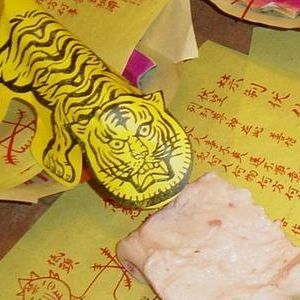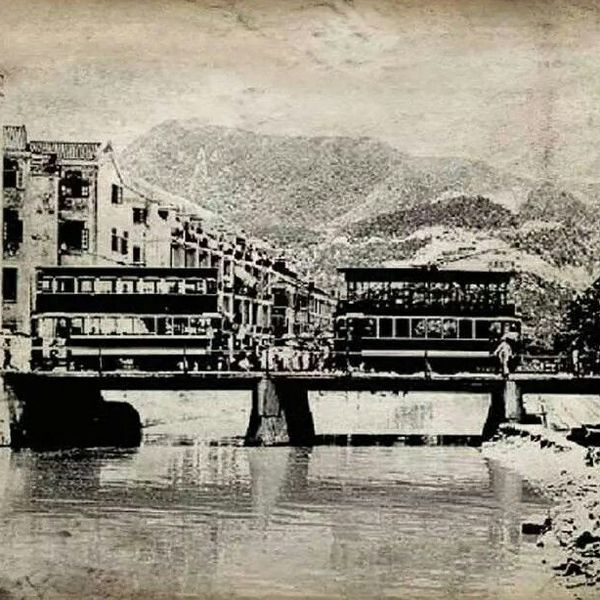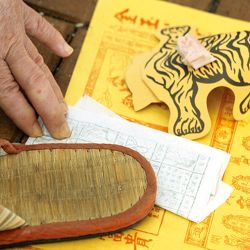
Beat your worries away under the ‘gooseneck bridge’





- Canal Rd Flyover
- Daily in afternoons. Peak season during Jingzhe (spring)
You can pay the ladies to beat pieces of ‘villain paper’ with an old shoe while they’re reciting colourful slogans to drive your problems away.
Cursing your enemy

Next time you have a problem, ‘Gooseneck Bridge’ — the local name for the highway flyover on Canal Road — is the place to go. Underneath the bridge, you’ll find a group of old ladies performing a distinctive ritual called ‘villain hitting’. Basically, you can pay them to beat pieces of ‘villain paper’ with an old shoe while they’re reciting colourful slogans to drive your problems away. Villain hitting is still widely practised in Guangdong. It’s even listed as intangible cultural heritage by the Hong Kong government!
Villains?
These villains they’re beating aren’t like the bad guys you see in a James Bond movie. It’s usually about resolving common kitchen table rivalries or getting rid of bad luck and poor health. The villain can be a specific person, such as a colleague or politician, or a non-specific character that serves as a personification of bad luck.
How does it work?
Villain hitters start their ritual by offering incense to the gods. Information like the name and birthday of the villain are written on a paper talisman - sometimes shaped like a human, to represent the villain. Then, it’s time to vent your anger by hitting the paper and curse as hard as you can. Bit hesitant? The villain hitters are happy to perform the ritual on your behalf.
Afterwards, you have to feed the white tiger - represented by a tiger-shaped yellow paper - with pork or lard so it’s too full to harm anyone. To finish off, the hitters will use a read paper to pray for blessings and burn paper-made-treasures to thank the spirits.
Why are they underneath this bridge?
The villain hitters are said to be attracted by the location’s abundant ‘yin’ energy. The old ladies probably don’t mind the busy foot flow under the bridge.
What’s in a name?
You may wonder why this place is called ‘gooseneck bridge’. When the early English colonial settlers were looking for suitable land to build a racing course, they decided on one of the few pieces of flat land in the area: Happy Valley. Because the land was marshy, they built a canal to divert the abundant spring water to the harbour. The canal was winding and narrow, and got the nickname ‘gooseneck’ or ‘Ngo Keng’ in Cantonese. In the 1920s, this part of the harbour was reclaimed and the canal was filled in. Now only the names remain...
